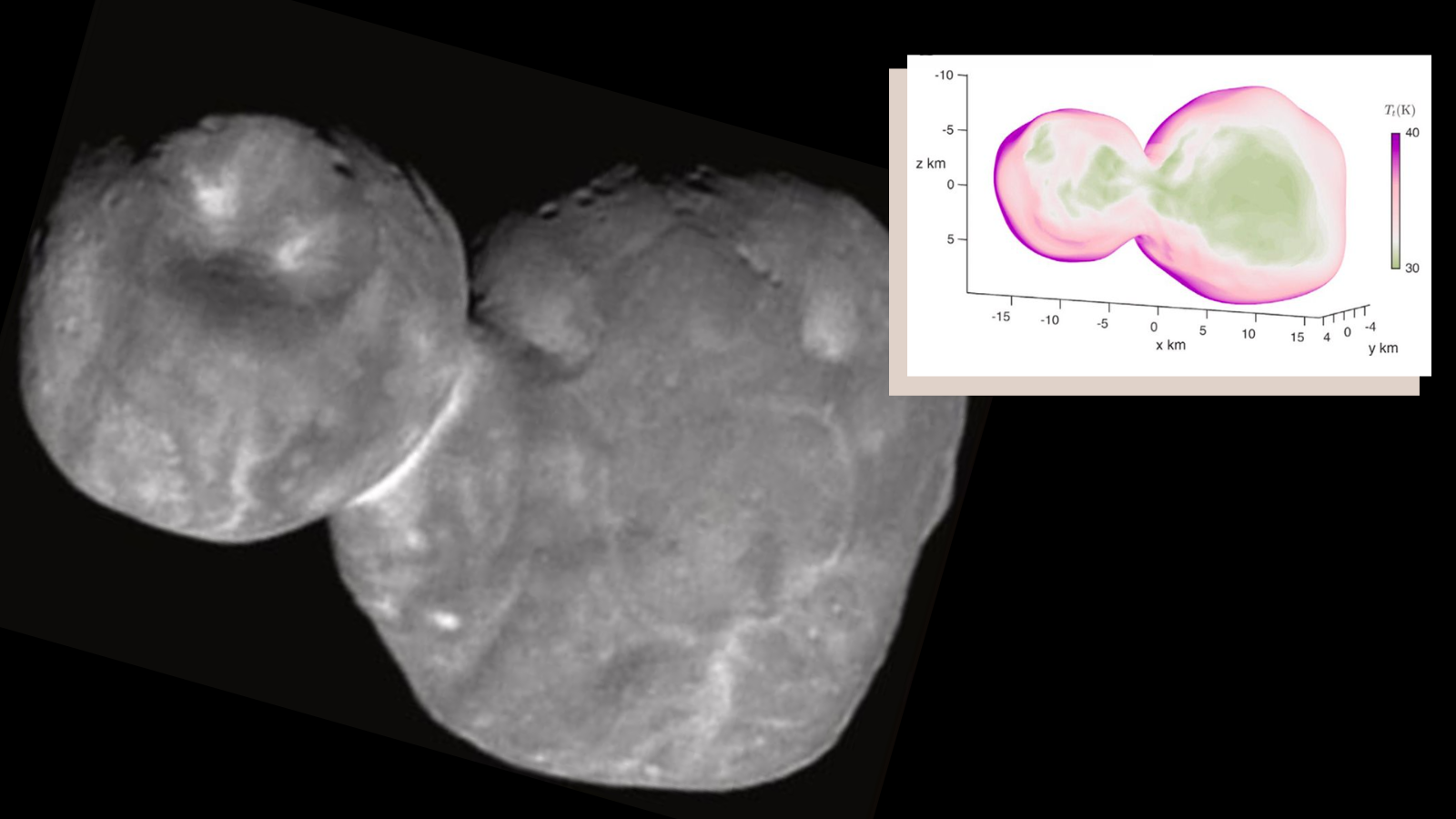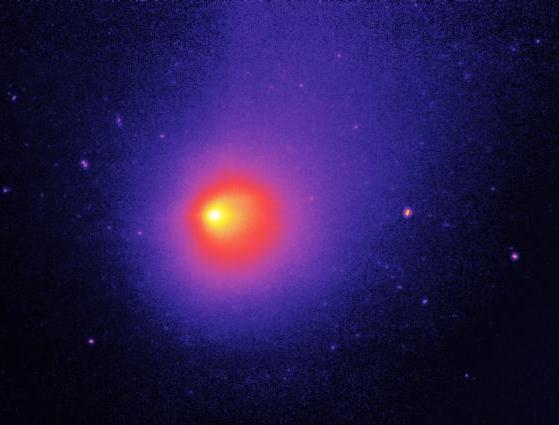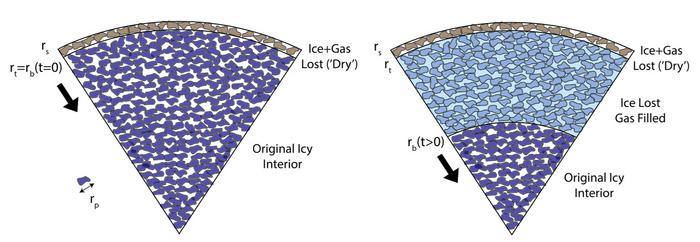
The Kuiper Belt object named "486958 Arrokoth," or simply "Arrokoth," may have more in common with a snowman than just its shape. New research suggests there's ancient ice locked within its frosty heart.
The research team considers this "space snowman," also known as "Ultima Thule," a case study for other bodies within the Kuiper Belt. This belt represents an icy ring of cometary objects found beyond the orbit of Neptune in the outer regions of our solar system. The Arrokoth finding therefore suggests that these bodies, which are remnants of material that existed during the formation of the planets 4.5 billion years ago, may still host their original ice content. These ices are also referred to as "volatiles" because of how quickly it would be possible for them to vaporize.
The findings challenge previous Kuiper Belt object evolutionary models, which have struggled to explain what happens to icy volatiles in these cold, distant objects. These models were based on assumptions that possibly underestimated how long Kuiper Belt objects can maintain volatiles in general, particularly carbon monoxide and water.
Related: What cosmic object 'Arrokoth' can tell us about our solar system's formation
Similar to how gas escapes from porous rock on Earth, the team behind this research hypothesizes that Kuiper Belt objects like Arrokoth undergo the same process with their ices. However, the crew believes Kuiper Belt objects can maintain their volatile ice for billions of years by forming a subsurface atmosphere that slows ice loss.
"The key thing is that we corrected a deep error in the physical model people had been assuming for decades for these very cold and old objects," Orkan Umurhan, team co-leader and SETI Institute senior research scientist said in a statement. "This study could be the initial mover for re-evaluating the comet interior evolution and activity theory."

In re-evaluating the interiors of Kuiper Belt objects, the team's theory could also explain why some of these bodies become "ice bombs," displaying explosive behavior when treading close to the sun.
It could also change our understanding of comets as a whole, and help explain the intense outbursts we saw with comet 29P/Schwassmann—Wachmann as it passed through the inner solar system.

The team's model suggests Arrokoth is comprised of a mix of carbon monoxide and water ice. As the comet passes the sun, its surface gets heated, which causes it to lose ice and gas via sublimation. Sublimation refers to the transformation of a solid directly to a gas, skipping the liquid phase.
This sublimation front, over time, would pass downward through preserved carbon monoxide ice sealed within what's known as a water ice matrix. The locked-up carbon monoxide ice also begins to sublimate — but, rather than this ice escaping, it would move up and fills pores in the upper layers of the simulated Arrokoth.
This would create an atmosphere within the body of Arrokoth, the team explains, preventing further gas from escaping. A comet with such a subsurface atmosphere would violently erupt when it once again passes close to the sun and loses more surface matter, allowing the built-up gas to escape rapidly.
The team behind this research is involved in the Comet Astrobiology Exploration Sample Return (CAESAR) mission. This proposed mission aims to acquire around 80 grams of surface material from the nucleus of comet 67P/Churyumov-Gerasimenko and return it to Earth for laboratory analysis.
This could help verify this fresh approach to cometary interiors, which has implications for our understanding of the evolution of these important frozen remnants of the early solar system.
The team's research can be found in the May 2024 edition of the journal Icarus.







